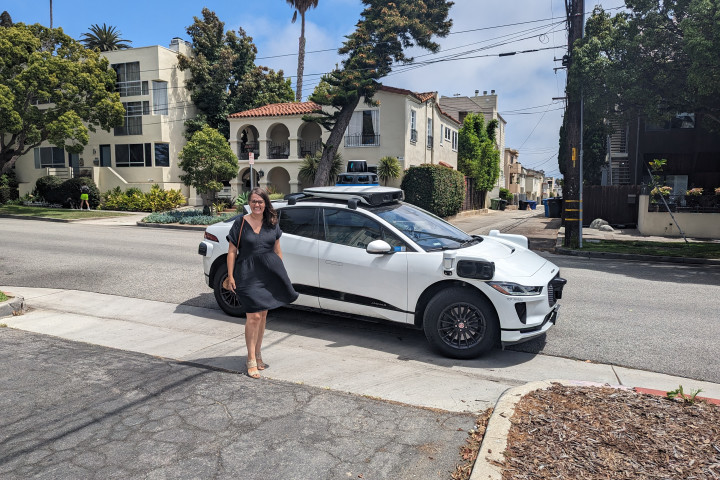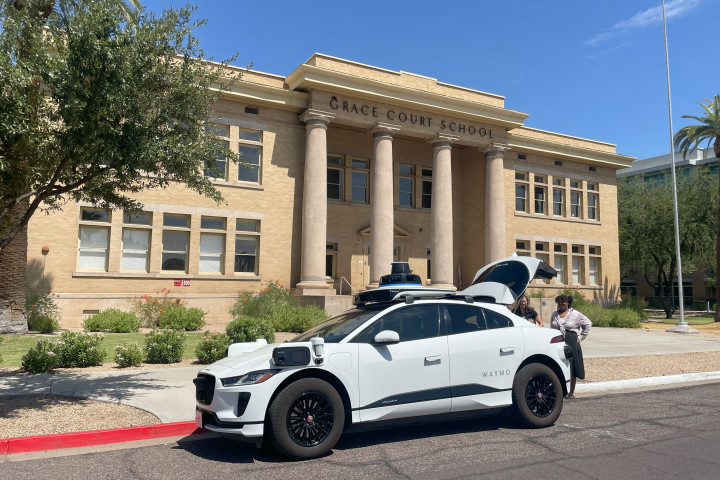Climate Change and Transit: Rethinking our Cities for a Greener Future
July 6, 2023

Together with community leaders like Greenbelt Alliance, Waymo can help foster sustainable development by providing a safe, accessible, and shared mobility service to help get people to where they need to go.
Greenbelt Alliance works throughout the San Francisco Bay Area and advocates for “climate SMART development” — Sustainable, Mixed, Affordable, Resilient, and Transit-oriented — to promote climate-resilient communities in the Bay Area who are living in urban environments that are safe from the impacts of a changing climate. Greenbelt Alliance is part of an evolving movement within the environmental community that is working with housing advocates to encourage developments that foster walking, biking, and mass transit. The Bay Area nonprofit advocates for transit-oriented housing to encourage shared mobility while reducing reliance on fossil fuels.
What is sustainable / smart development and what are the benefits?
A big part of the equation is how we develop our cities and houses. The goals of sustainable development include reducing energy consumption, protecting our precious natural lands from sprawl development and decreasing greenhouse gas emissions in all facets of industry and our everyday lives. Sustainable development also incorporates social and economic factors by building housing that is accessible to a range of income levels. A critical component in reducing both housing costs and harmful emissions is living without private car ownership.
While not feasible for some urban residents, shared autonomous vehicles can provide community members with safe, reliable, and affordable mobility service. This type of service can also support cities in reaching their sustainability goals by increasing shared EV access when residents need vehicle transportation.
“It’s time to reimagine our transportation systems for a more sustainable and equitable future for Bay Area residents,” says Brown-Stevens.
Like many metropolitan areas, the Bay Area has not done enough to sustainably build affordable homes near jobs and transit, which pushes many lower-income residents further away from accessible services and jobs, and increases both the environmental and financial costs of transportation. By building Bay Area housing within our existing communities residents are more likely to share transportation and encourage shared mobility—overall reducing carbon emissions.
An efficiently deployed Waymo One service working with other shared mobility like public transportation can help repurpose parking, complement existing transit options, improve pedestrian safety and reduce localized emissions, ultimately helping cities and streets be designed more for people and less for cars.

How does EV technology and climate-smart development build more sustainable communities?
50% of California’s greenhouse gas emissions come from transportation - 40% from tailpipe and 10% from refinery/production. Greenhouse gas emissions can be reduced by advancing more housing in our urban areas, that is - near transit, jobs, and services. Communities across the Bay Area can benefit from increased access to sustainable transportation options such as public transit, biking, walking, and electric vehicles when vehicle transportation is needed.
Zero-emission EVs can have material impacts on local air quality by creating more sustainable streets for walking and biking. Waymo’s autonomous EV fleet is powered by 100% renewable energy, providing a truly zero-emission ride-hailing service to communities. Sourcing clean energy for the Waymo fleet extends sustainable benefits by avoiding the use of grid energy produced from non-renewable sources. In addition to reducing carbon emissions, sharing EVs can reduce the transportation hassles associated with individual car ownership. Riders don’t have to worry about parking & charging solutions, range anxiety, battery warranties, etc. Shared mobility can have many co-benefits to our environment and communities, even for residents who don’t utilize the service.
Safer streets make it safer to bike and walk; less parking demand can help communities install more bike lanes and build more housing.
One of the projects Greenbelt Alliance works on is advocating for parking lot reforms to minimize the impact of new residents by offering more non-driving mobility options, including biking, walking, and transit.
Not only do parking lot reforms increase housing affordability and promote a more diverse transportation system, reducing car-centric parking systems in urban centers makes it safer for pedestrians and cyclists to navigate their environment. The Waymo Driver can help reduce injuries and fatalities on the road, creating safer streets for our community members.
The average U.S. vehicle is vastly underutilized, being parked 95% of the time. With more than 15 million parking spaces in the nine-county Bay Area – twice as many spots as people – there is a growing demand to redirect parking pavements to community-focused spaces.

San Francisco became the first major city to eliminate parking requirements from its building codes in 2018. Similar action is seen with San Jose’s policy removing minimum parking requirements from new developments and instead requiring bicycle parking (as part of a Greenbelt Alliance advocacy campaign), and California’s law banning parking spaces for new developments near public transit. Waymo can help by providing access to a vehicle when community members need one - avoiding the need to build costly parking into new development projects. Reforming parking policies can also increase climate resilience. Currently, zoning codes typically mandate a minimum amount of off-street parking spaces for construction. This leads to underutilized land (up to 30% in the South Bay Area), a decrease in density, and an increase in the reliance of cars. This means that congestion and air pollution increase while degrading walkability and community environments. An excessive amount of surface parking decreases permeable surfaces, which makes areas more prone to floods and increases the urban heat effect. Right-sizing our parking will play a key role in addressing all of these issues. By eliminating minimum parking requirements, cities can make strides towards greater environmental sustainability, affordability, as well as the social cohesion of community members sharing public space.
Accessible and affordable mobility options support Climate-SMART Development.
Low-income households in the Bay Area spend on average “24% of its income on transportation, compared with the U.S. average of 18%” and are “five times more likely not to own a car compared to higher income households.” How does accessible mobility address critical equity issues? “We recognize that the traditional environmentalist dream of eliminating cars or having everyone drive EVs isn’t feasible for everyone in urban settings,” says Brown-Stevens. “Not everyone has access to charging stations, and many EVs are cost-prohibitive to lower-income communities. I believe autonomous vehicles can help address this barrier and make sustainable mobility more accessible.”
Both gas and electric vehicles can be expensive to own and maintain. Waymo riders do not need to solve for vehicle financing, maintenance costs, or fueling. For many community members facing mobility gaps, Waymo can help expand their mobility options.
Mobility is not one size fits all.
Waymo supports many efforts that work to reduce greenhouse gas emissions – including safer streets for pedestrians and bikers, efficient public transit and electric vehicle adoption – and appreciates the leadership from organizations like the Greenbelt Alliance that provide framework and resources to help the Bay Area grow sustainably. “It’s proven that our transportation infrastructure and reliance on gas vehicles is not sustainable,” says Brown-Stevens. “For our communities and cities to thrive, it’s time we rethink how we use cars, the kinds of cars we use, and how transit-oriented, affordable housing can improve the lives of all urban residents.”
Waymo believes that shared autonomous EVs can deliver more environmental benefits, increase mobility for millions, and support communities in advancing SMART and sustainable development.
Download the Waymo app today! Learn more about Greenbelt Alliance at greenbelt.org.
Sign Up
Join us in the most important conversations about how autonomous driving technology may shape the future of safety, mobility, community, and society.


